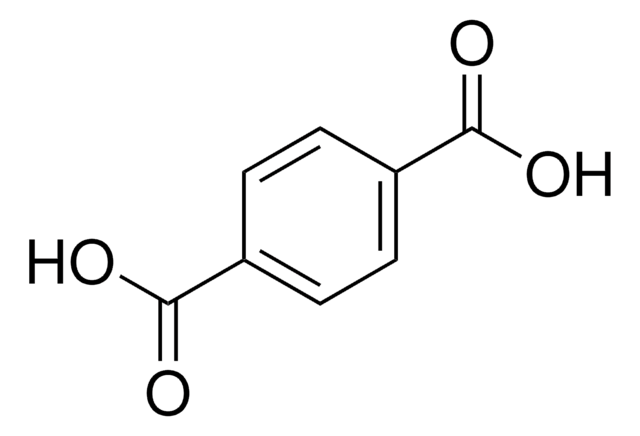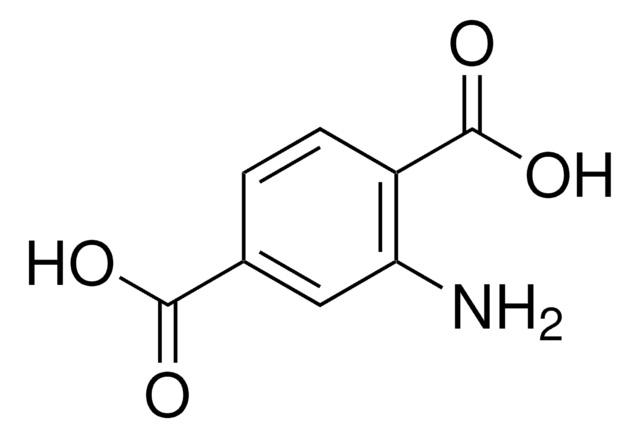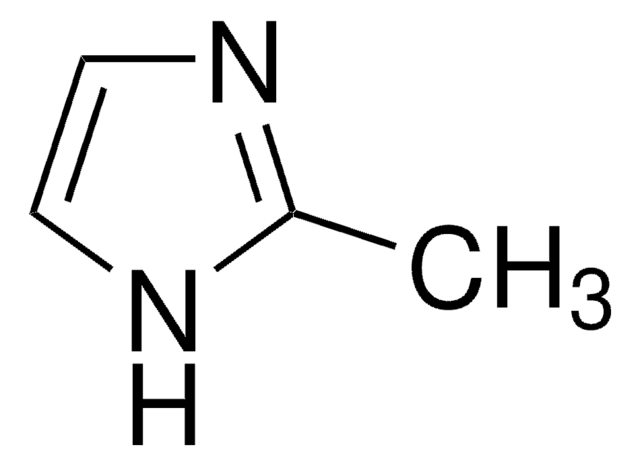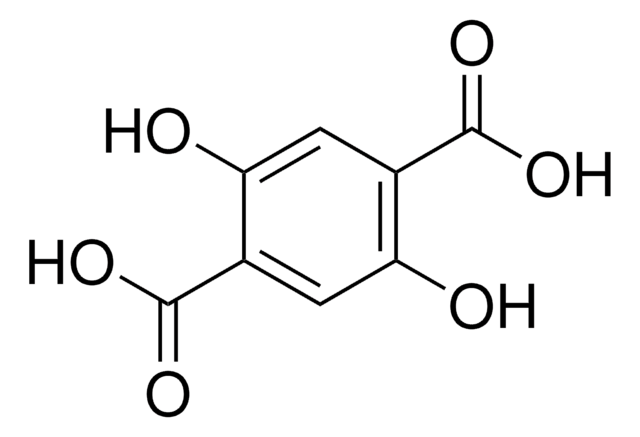482749
Trimesic acid
95%
Synonym(s):
BTC, H3BTC, TMA, Benzene-1,3,5-tricarboxylic acid
Sign Into View Organizational & Contract Pricing
All Photos(4)
About This Item
Linear Formula:
C6H3(CO2H)3
CAS Number:
Molecular Weight:
210.14
Beilstein:
2053080
EC Number:
MDL number:
UNSPSC Code:
12352100
PubChem Substance ID:
NACRES:
NA.22
Recommended Products
Quality Level
Assay
95%
greener alternative product characteristics
Design for Energy Efficiency
Learn more about the Principles of Green Chemistry.
sustainability
Greener Alternative Product
impurities
<5% acetic acid
mp
>300 °C (lit.)
greener alternative category
SMILES string
OC(=O)c1cc(cc(c1)C(O)=O)C(O)=O
InChI
1S/C9H6O6/c10-7(11)4-1-5(8(12)13)3-6(2-4)9(14)15/h1-3H,(H,10,11)(H,12,13)(H,14,15)
InChI key
QMKYBPDZANOJGF-UHFFFAOYSA-N
Looking for similar products? Visit Product Comparison Guide
General description
Trimesic acid (TMA), also known as 1,3,5-benzenetricarboxylic acid, has a self-organized 2D molecular network structure formed by intermolecular hydrogen bonds between the carboxylic acid residues in bulk crystals.
We are committed to bringing you Greener Alternative Products, which adhere to one or more of The 12 Principles of Greener Chemistry. This product has been enhanced for energy efficiency. Find details here.
Application
TMA can be used in the synthesis of metal-organic frameworks (MOFs), which can be used as organic linkers potentially utilized in sensors.
Storage Class Code
11 - Combustible Solids
WGK
WGK 3
Personal Protective Equipment
dust mask type N95 (US), Eyeshields, Gloves
Choose from one of the most recent versions:
Already Own This Product?
Find documentation for the products that you have recently purchased in the Document Library.
Customers Also Viewed
Solid-state self-assembly of a complex from 1, 3, 5-benzenetricarboxylic acid and 1, 3, 5-trihydroxybenzene: influence of strong O-H--O and C-H--O hydrogen bonds
Liu R, et al.
New. J. Chem., 25(7), 890-892 (2001)
A two-dimensional molecular network structure of trimesic acid prepared by adsorption-induced self-organization
Ishikawa Y, et al.
Chemical Communications (Cambridge, England), 3(22), 2652-2653 (2002)
Hai-Long Jiang et al.
Inorganic chemistry, 49(21), 10001-10006 (2010-10-12)
A series of microporous lanthanide-organic framework enantiomers, Ln(BTC)(H(2)O)·(DMF)(1.1) (Ln = Y 1a, 1b; Tb 2a, 2b; Dy 3a, 3b; Er 4a, 4b; Yb 5a, 5b, BTC = 1,3,5-benzenetricarboxylate; DMF = N,N-dimethylformamide) with unprecedented (6,6)-connected topology have been prepared and characterized.
Lin-Hua Xie et al.
Inorganic chemistry, 49(3), 1158-1165 (2010-01-07)
Solvothermal reactions of equimolar zinc acetate, lithium acetate, and 1,3,5-benzenetricarboxylic acid (H(3)btc) in different mixed solvents yielded isostructural three-dimensional frameworks [LiZn(btc)(cG)].lG [cG and lG denote coordinated and lattice guests, respectively; cG = (nmp)(0.5)(H(2)O)(0.5), lG = (EtOH)(0.5) (1a); cG = H(2)O
Leslie J Murray et al.
Journal of the American Chemical Society, 132(23), 7856-7857 (2010-05-21)
Reaction of Cr(CO)(6) with trimesic acid in DMF affords the metal-organic framework Cr(3)(BTC)(2).nDMF (BTC(3-) = 1,3,5-benzenetricarboxylate), which is isostructural to Cu(3)(BTC)(2).3H(2)O. Exchanging DMF for methanol and heating at 160 degrees C under dynamic vacuum for 48 h results in the
Our team of scientists has experience in all areas of research including Life Science, Material Science, Chemical Synthesis, Chromatography, Analytical and many others.
Contact Technical Service









